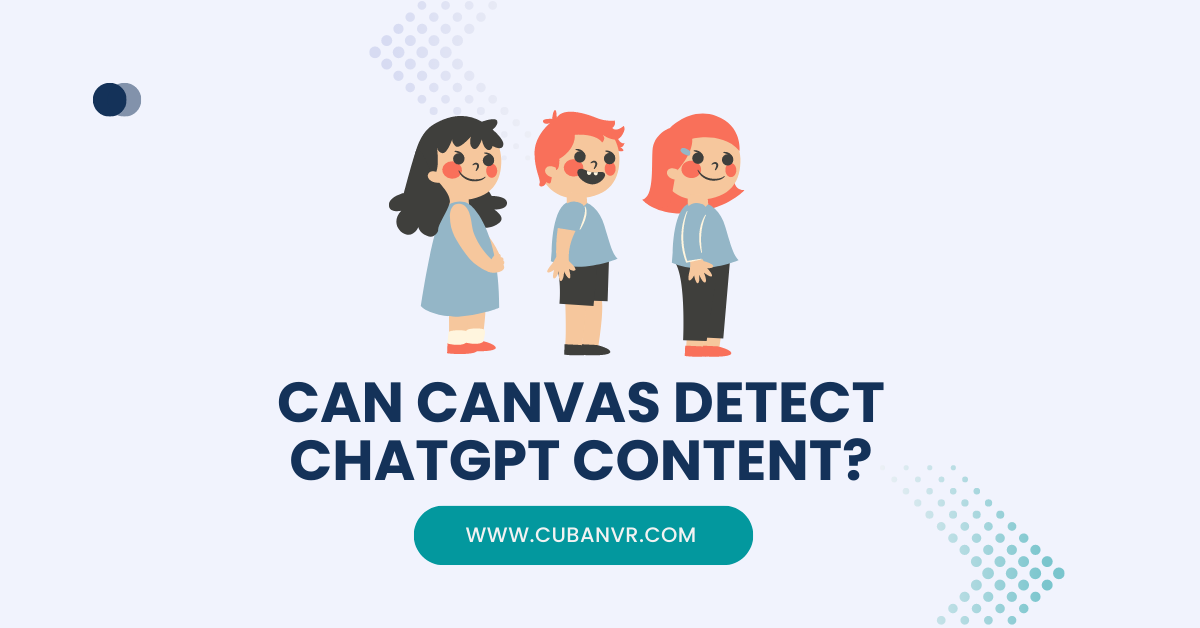The convergence of artificial intelligence and education has given rise to innovative platforms like Canvas, revolutionizing how students learn and interact with course materials. Amid this transformation, the question arises: Can Canvas detect ChatGPT for completing assignments or engaging in discussions?
Canvas, a leading learning management system, offers educators and students a dynamic platform for course delivery, engagement, and assessment. It fosters collaborative learning through discussion boards, assignments, and quizzes. However, as technology evolves, so does the potential for academic misconduct through the use of AI tools.
Canvas has incorporated plagiarism detection tools to identify copied content and improper citations. These mechanisms primarily focus on comparing submitted text with a database of existing sources. However, detecting AI-generated content presents unique challenges due to the ever-expanding nature of AI language models. Therefore, Canvas cannot detect ChatGPT activities because it does not have a physical presence or access to Canvas used in educational institutions.
See also: Can ChatGPT Used For Coding Be Detected?
Challenges of Canvas in detecting ChatGPT content
The sophistication of AI Models
AI models like ChatGPT are capable of generating contextually relevant and coherent content, making it difficult to distinguish between human-authored and AI-authored text.
No Precedent
As AI-powered content generation is relatively new, there might not be a comprehensive database of AI-generated text for comparison, hampering traditional detection methods.
Contextual Understanding
AI-generated content can incorporate prompts and context provided by the user, making it challenging to attribute authorship solely to AI.
Privacy and Consent
Educators and institutions need to be transparent about the use of AI detection mechanisms and obtain consent from students before implementing them. Institutions can establish guidelines for incorporating AI-generated content into coursework, ensuring its ethical and responsible utilization.
Educational implication
There are educational implications associated with students using AI generators like Bard and ChatGPT so if students should be allowed to use AI, they should be educated about the ethical implications of using AI to complete assignments, emphasizing the value of genuine learning and critical thinking. Educators should focus on educating students about responsible AI use and the importance of contributing their original insights to discussions and assignments.
Unintended Consequences
Overreliance on AI detection could inadvertently discourage creative thinking and collaboration among students. As AI technology evolves, detection mechanisms must evolve as well, adapting to new advancements and challenges.
See also: What Is Undetectable AI And How To Use It?
FAQs
Can ChatGPT be detected?
Universities can now detect ChatGPT and many other AI content creators with ease. AI and plagiarism detection should take place if the work is submitted using a university’s learning management system, such as Turnitin.
What activity can Canvas detect?
While Canvas cannot independently identify any suspicious activity, it can do so with the aid of other applications. While plagiarism detection software can detect whether you have plagiarized someone else’s content, proctoring software can track new tabs and switch between tabs.
Can Canvas detect other programs?
Canvas is unable to tell if a student has opened new tabs in a web browser or started a new web browser or application while taking a quiz or test. Conversely, Canvas will track and restrict student browser access if they are proctored.
Conclusion
As Canvas continues to shape the modern education landscape, the question of AI detection looms large. While challenges exist in identifying AI-generated content, a holistic approach that combines transparency, ethical awareness, and responsible AI use can strike a balance between innovation and academic integrity. The goal is not just to detect AI but to foster a culture of genuine learning, critical thinking, and ethical AI utilization within the educational ecosystem.
